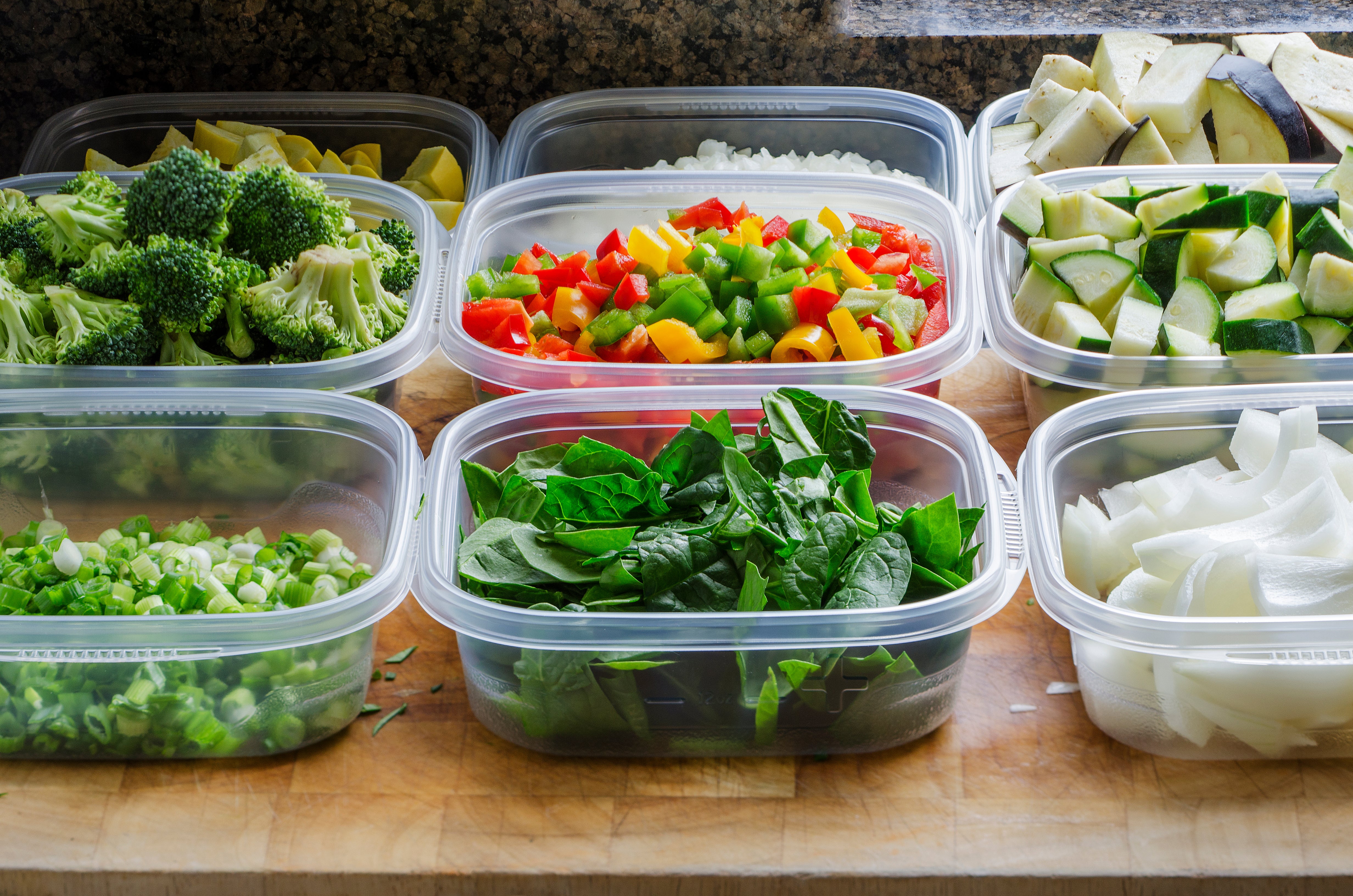By Elisa Bosley (elisabosley.com)
When people ask me what I consider to be the single most useful or important cooking tip, I answer with two words: meal planning.
Compared with eating out, meal planning:
- Saves money and energy. You’ll always spend more on restaurant food than homecooked food, not to mention the cost of gasoline and the parking hassle.
- Helps you lose weight and eat healthier. Processed foods and restaurant foods are notoriously packed with sugar, salt, and fat. When you cook for yourself, you control what goes into your body.
- Eliminates the dreaded “what’s for dinner” question. You’ll have a meal plan posted for all to see—you can even involve the kids in making the menus.
What other kitchen technique can accomplish all that?

If you think meal planning sounds like too much trouble, consider the time (and stress) it takes to decide each night what you’re going to eat for dinner AND run to the store to pick up missing items—or even the time it takes to go out, order, or receive takeout food. Now multiply that by five days a week. I guarantee you’ll total up more time that it would have taken you to plan a menu and do the shopping in a single two-hour time slot.
Here’s how to do it.
- On Saturday or Sunday, sit down with the family calendar and note evenings that require particularly speedy meals. Take an inventory of items you have in your fridge or pantry that you need to use up. Check the weather for the week (this helps determine whether you might want to grill, oven-roast, use the slow cooker, etc.).
- Armed with that information, brainstorm a few simple meals. Start with a simple main dish and one side. A few basic combos:
- Roast chicken (whole or pieces) with broccoli.
- Poached fish with seasonal or frozen veggie (asparagus, brussels sprouts).
- Main-dish salad with a little protein: bacon, hard-cooked eggs, beans, leftover ham or chicken, cheese. Add lots of seasonal vegetables, such as bell peppers, snap peas, leftover asparagus or corn, red onion, grape tomatoes.
- Bottled low-sodium marinara sauce (throw in extra meat, garlic, onion, mushrooms, nearly any leftover vegetable), whole-grain or veggie noodles, and salad.
- Taco bar or potato bar: grated cheese, ground meat or chili, chopped green onions, chopped tomato or bottled salsa, canned black beans, frozen corn, plain Greek yogurt, cilantro, garlic powder, olives, etc.
- To save money, keep in mind in-season fresh foods, such as berries in summer, squash in winter. (Frozen fruits and veggies are also great.) In our house we eat mostly paleo, so menus are typically some kind of meat and some kind of salad or vegetable. I see no need to bulk it out with extras, but if you have carb-hungry folks, you can always add a loaf of bread or baked potatoes or rice.
- Stay flexible! Plan for one or even two “off” nights when you keep cooking to a minimum (or don’t cook at all). You could have leftovers, scrambled eggs and fruit, cheese and apples with popcorn, rice and beans with salad.
- To simplify even further, you can make a template for each week: Monday is chicken and veggie, Tuesday is fish, Wednesday is tacos/nachos/burritos, Thursday is soup, Friday is leftovers.
- Create a thorough shopping list (don’t forget to add everyday staples for breakfasts and lunches). My husband divides up the list by store section: produce, dairy, meats, other. Freeze any meats that you don’t plan to use in the next day or two.
- Each night, look at your meal plan and defrost anything you’ll need the next day.
Peruse the Web to find great recipe ideas. I heartily recommend the recipes at DeliciousLiving.com, where I was the food editor and editor in chief for 14 years—I can verify that every recipe is tested for accuracy and delicious.
Cheers!







0 Comment